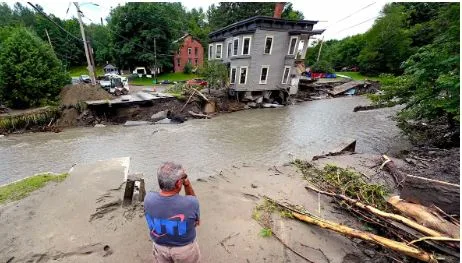Flood Damage Repair Made Easy: How to Restore Your Home After a Water Emergency
Introduction: When Water Strikes, Time Matters
Flooding is one of the most devastating natural disasters a homeowner can face. Whether caused by heavy rain, a broken pipe, or a storm surge, water can quickly infiltrate your home, causing significant structural damage, mold growth, and emotional stress. Effective and timely Flood damage repair is essential to prevent long-term issues and restore your property safely.
In this comprehensive guide, we walk you through every critical step—from immediate response to full home restoration—equipping you with the tools and knowledge to recover efficiently from a flood emergency.
Understanding the Scope of Flood Damage
Types of Flooding Events
Flooding can result from:
- Flash floods triggered by intense rainfall
- River or coastal flooding due to rising water levels
- Plumbing failures, such as burst pipes or appliance malfunctions
- Sewer backups, which pose serious health risks
According to the Federal Emergency Management Agency (FEMA), floods are the most common and costly natural disaster in the United States.
Common Damage Caused by Floods
- Structural weakening (walls, floors, and foundations)
- Damage to electrical and HVAC systems
- Soaked insulation and drywall
- Mold and mildew infestation
- Contaminated water leads to health hazards
Flood damage affects both visible and hidden components of your property, which is why a thorough inspection is crucial.
Flood Damage Repair Process: Step-by-Step
1. Ensure Safety First
Before beginning any repair work:
- Turn off the electricity and gas supply
- Wear protective gear
- Avoid contact with standing water if contamination is suspected
- Call professionals if structural instability is visible
For emergency safety tips, refer to the Red Cross Flood Safety.
2. Document the Damage for Insurance
Take detailed photographs and videos of all damaged areas and items. Create an inventory of losses and expenses. This documentation is vital when filing an insurance claim.
According to the Insurance Information Institute (III), standard homeowners’ insurance does not cover flood damage; therefore, a separate flood insurance policy is essential.
3. Water Extraction and Drying
Prompt water removal is essential. Use:
- Wet/dry vacuums
- High-capacity water pumps
- Industrial dehumidifiers and air movers
Drying out the affected areas within 24-48 hours can prevent mold growth and further structural damage.
4. Mold Prevention and Remediation
Mold can start growing in as little as 24 hours. Steps include:
- Removing wet materials like carpet, insulation, and drywall
- Cleaning surfaces with antimicrobial solutions
- Running HEPA filters and air scrubbers
5. Structural and Electrical Repairs
Once the space is dry and sanitized:
- Inspect for warped wood, cracks in foundations, and damaged drywall
- Replace electrical wiring, outlets, and switches if submerged
- Have licensed professionals inspect and repair your systems
Choosing a Professional Flood Damage Repair Company
Choosing a professional flood damage repair company is crucial for restoring your property safely and efficiently. With trained technicians, advanced equipment, and experience handling water-related emergencies, these experts ensure thorough cleanup, mold prevention, and structural repair—giving you peace of mind during a stressful time.
What to Look For:
- 24/7 emergency service availability
- Certified technicians (IICRC certification preferred)
- Experience with insurance claims
- Advanced drying and detection equipment
- Transparent pricing and detailed repair plans
Cost of Flood Damage Repair
Flood damage repair costs vary significantly depending on:
- The extent and type of water damage
- Affected square footage
- Labor and material costs
- Time required for restoration
Average costs range from $2,000 to $8,000, but can go higher for extensive damage. Check out Forbes Advisor’s Flood Damage Cost Breakdown for a detailed overview.
Preventative Measures for Future Floods
Install Flood-Resistant Systems
- Sump pumps with battery backup
- Sewer backflow valves
- Water sensors and alarms
Home Improvement Upgrades
- Elevate electrical systems
- Seal foundation cracks
- Improve drainage around your home
The National Flood Insurance Program (NFIP) also offers resources and grants for flood-proofing homes.
Conclusion: Act Fast, Stay Prepared
Recovering from a flood can be overwhelming, but taking timely and informed actions can significantly reduce damage, health risks, and repair costs. Whether you manage the restoration yourself or hire a professional for Flood damage repair, remember that safety and speed are your top priorities.
Don’t wait until it’s too late—prepare now and consult certified experts for peace of mind during water-related emergencies.




